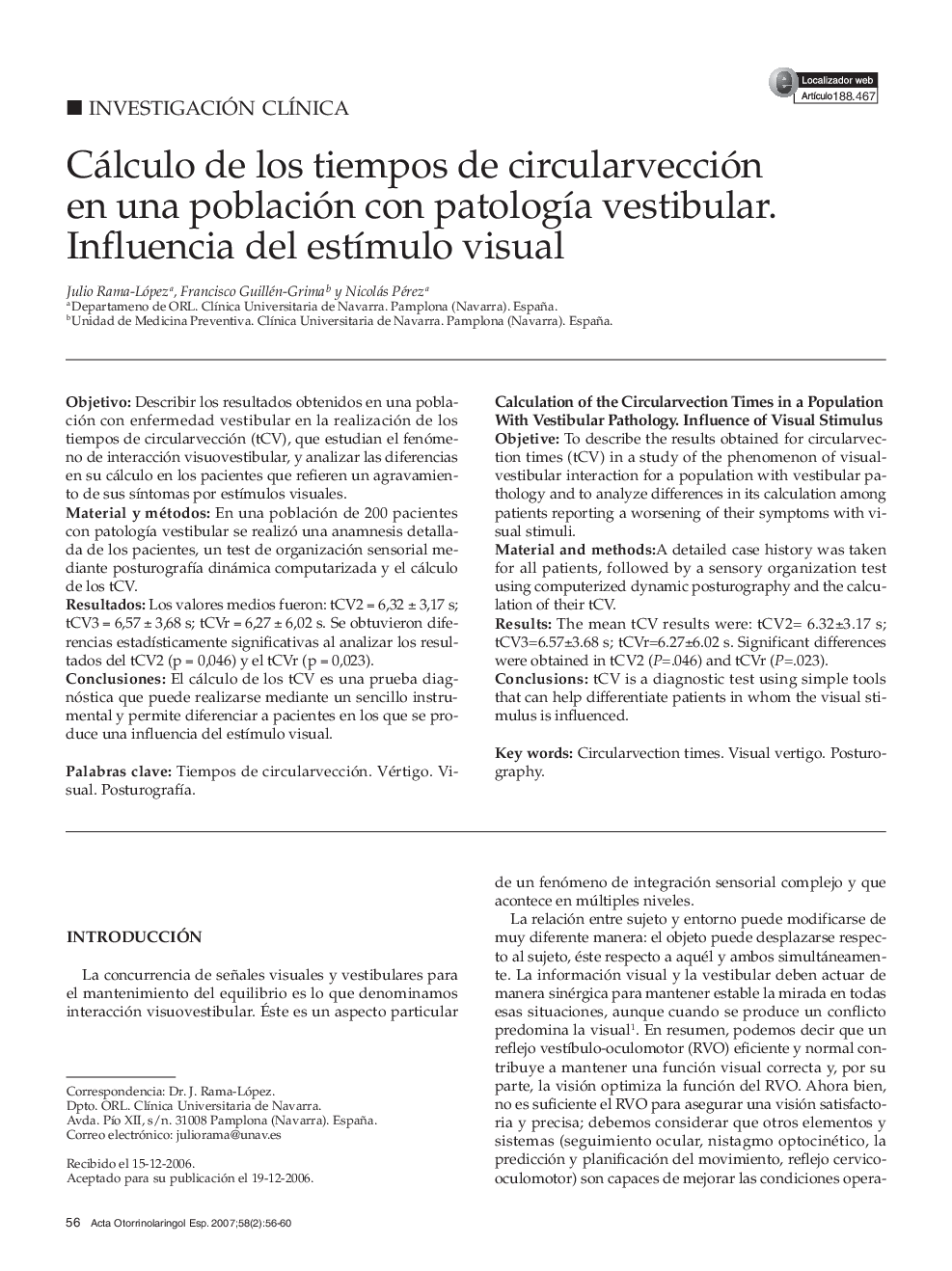| کد مقاله | کد نشریه | سال انتشار | مقاله انگلیسی | نسخه تمام متن |
|---|---|---|---|---|
| 4102679 | 1268843 | 2007 | 5 صفحه PDF | دانلود رایگان |

ObjetivoDescribir los resultados obtenidos en una población con enfermedad vestibular en la realización de los tiempos de circularvección (tCV), que estudian el fenómeno de interacción visuovestibular, y analizar las diferencias en su cálculo en los pacientes que refieren un agravamiento de sus síntomas por estímulos visuales.Material y métodosEn una población de 200 pacientes con patología vestibular se realizó una anamnesis detallada de los pacientes, un test de organización sensorial mediante posturografía dinámica computarizada y el cálculo de los tCV.ResultadosLos valores medios fueron: tCV2 = 6,32 ± 3,17 s; tCV3 = 6,57 ± 3,68 s; tCVr = 6,27 ± 6,02 s. Se obtuvieron diferencias estadísticamente significativas al analizar los resultados del tCV2 (p = 0,046) y el tCVr (p = 0,023).ConclusionesEl cálculo de los tCV es una prueba diagnóstica que puede realizarse mediante un sencillo instrumental y permite diferenciar a pacientes en los que se produce una influencia del estímulo visual.
ObjetiveTo describe the results obtained for circularvection times (tCV) in a study of the phenomenon of visualvestibular interaction for a population with vestibular pathology and to analyze differences in its calculation among patients reporting a worsening of their symptoms with visual stimuli.Material and methodsA detailed case history was taken for all patients, followed by a sensory organization test using computerized dynamic posturography and the calculation of their tCV.ResultsThe mean tCV results were: tCV2= 6.32±3.17 s; tCV3=6.57±3.68 s; tCVr=6.27±6.02 s. Significant differences were obtained in tCV2 (P=.046) and tCVr (P=.023).ConclusionstCV is a diagnostic test using simple tools that can help differentiate patients in whom the visual stimulus is influenced.
Journal: Acta Otorrinolaringológica Española - Volume 58, Issue 2, February 2007, Pages 56-60